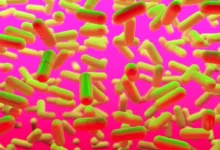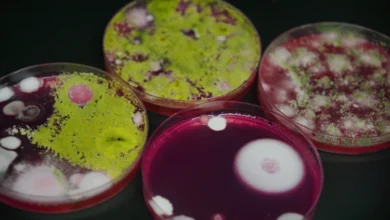Scientists Use mRNA Nanoparticles to Force Hidden HIV Out of White Blood Cells
New LNP Technology Delivers mRNA Into Resting CD4+ T Cells, Breaking a Major Barrier in HIV Cure Research

For decades, HIV cure research has been held back by one stubborn problem: the virus hides. Even when blood tests show no trace, HIV lurks deep inside resting CD4+ T cells, white blood cells that act as long-term reservoirs. These hidden viruses aren’t affected by current treatments and can reactivate at any time, making a full cure impossible.
How It Works

A team at the Peter Doherty Institute in Melbourne may have found a way to force HIV out of hiding. Using a specially designed lipid nanoparticle, called LNP X, the researchers successfully delivered mRNA into these previously unreachable T cells.
The mRNA carried genetic instructions that told the cells to “wake up” the dormant virus, making it visible to the immune system and opening a path to eliminate it.
This is the first time mRNA has been delivered into resting CD4+ T cells effectively. Past attempts failed because traditional lipid nanoparticles were ignored by these cells. LNP X, however, was engineered to bypass that barrier, getting in without harming or activating the cells in unwanted ways.
The breakthrough centers on using LNP X to deliver mRNA that encodes Tat, a protein made by HIV itself. Tat is known to trigger the virus to start replicating. When the dormant virus is reactivated, it becomes detectable—potentially allowing the body or future treatments to clear it.
In lab experiments using cells from people living with HIV, LNP X not only got into the resting T cells, it also prompted a strong increase in viral activity. The dormant virus was switched on. That alone doesn’t remove HIV from the body, but it solves a key piece of the puzzle: how to unmask the virus in the first place.
According to Dr. Paula Cevaal, co-first author of the study, the initial results were so striking they had to be double-checked.
“When we saw the early data, it looked almost too good to be real,” she said. “But after repeating the experiments many times, the results held.”
What This Means and What It Doesn’t
This discovery doesn’t mean a cure is around the corner. The study was done in cells outside the body, not in animals or humans. And while the technology reveals the virus, it doesn’t eliminate it.
Additional steps like boosting immune response or using targeted therapies will be needed to kill the infected cells.
Still, this is a significant leap forward. Researchers had no effective way to deliver reactivation signals into the exact cells where HIV hides. LNP X changes that.
The method also opens new doors for mRNA-based therapies targeting immune cells involved in other diseases, including some cancers.
A Long Road Ahead
Co-senior author Dr. Michael Roche emphasized that more work is needed. The next steps will include testing in animals, evaluating safety, and eventually moving toward human trials, each stage likely taking years.
Other experts agree the approach is promising. Dr. Jonathan Stoye from the Francis Crick Institute called the study “a major advance” in delivering mRNA to white blood cells but noted that many unknowns remain.
Chief among them: how much of the HIV reservoir needs to be cleared to prevent future relapse?
Even a small amount of hidden virus might be enough to restart infection, making total clearance an ongoing challenge.
The path to an HIV cure is still long, and no single breakthrough will be enough on its own. But the development of LNP X—and its success in reaching the virus’s last stronghold—marks a critical turning point.
For the first time, researchers can reliably expose hidden HIV in the very cells that have kept it safe for so long.
[Source]







